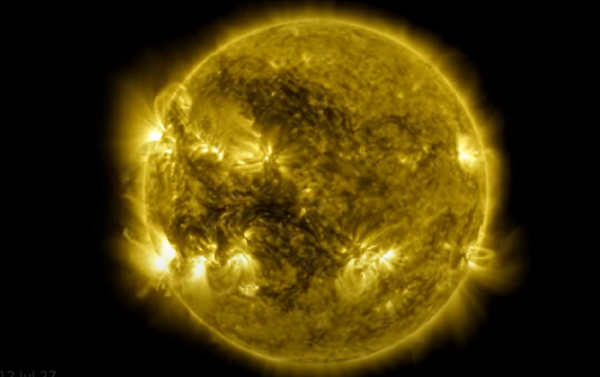
The Solar Orbiter satellite, a joint NASA and ESA (European Space Agency) mission, has sent back the first batch of images taken in mid-June during its initial close pass of the sun from a distance of 77 mln kilometres (48 mln miles).
As the media revels in astounding closest-ever images of the sun taken at 77m kilometres (48m miles) above the solar surface between the orbits of Venus and Mercury, the images beamed back by Solar Orbiter spacecraft have revealed that its surface is speckled with flickering beacons, spawning theories probing one of the most mysterious phenomena – the coronal heating, writes The European Space Agency portal.
The miniature solar flares, dubbed “campfires”, each spanning just a few hundred kilometres across and lasting minutes, are a phenomena previously not observable in such detail.
The first batch of stunning images are attributed to the Extreme Ultraviolet Imager (EUI), which takes high-resolution images of the lower layers of the Sun’s atmosphere, the solar corona, from Solar Orbiter’s first perihelion – the point in its elliptical orbit that is closest to the Sun.
Commenting on the new phenomena observed in the images, David Berghmans of the Royal Observatory of Belgium (ROB), Principal Investigator of the EUI instrument, said:
The scientists are yet to determine just what exactly the “campfires” are, as they might be tiny versions of big flares, or attributed to other mechanisms.
Extending millions of kilometres into outer space, the solar corona has a temperature of over a million degrees Celsius, which is much hotter than the 5,000 degrees Celsius temperature of the surface of the Sun.
This mystery has baffled scientists for decades, as they ponder the physical mechanisms that heat the corona.
It is possible that the miniature flares could provide enough energy to heat up the Sun’s corona to its observed extreme temperature, yet further observations and analysis would be required to confirm this.
The observations were made in a batch of initial images beamed from the Solar Orbiter spacecraft, a joint NASA and European Space Agency (ESA) Sun-studying mission, and are touted as just a hint at things to come.
Launched in February, the $1.3 bln mission is tasked with offering the first glimpses of the sun’s uncharted north and south poles, once the Solar Orbiter reaches a “vantage point” above the planetary plane late in 2021.
Sourse: sputniknews.com






